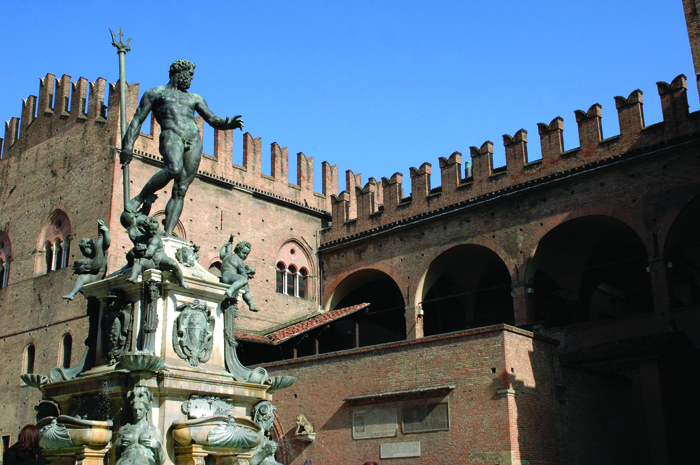Renaissance towers, arcaded porticos and a cuisine to die for – Bologna is the perfect alternative to the north’s more famous destinations. Marina Spironetti reports…
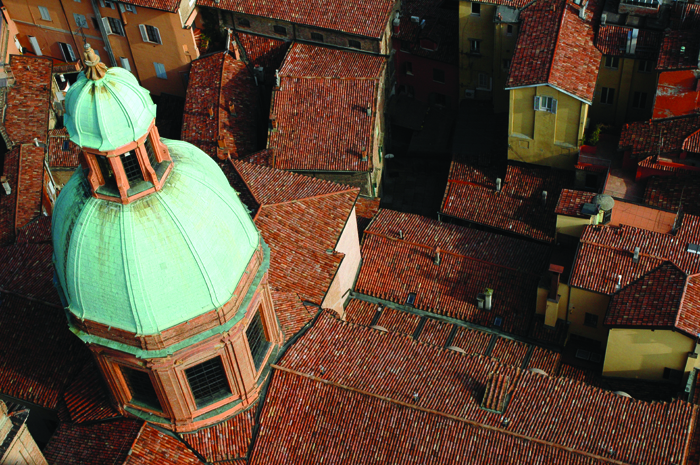
Bologna, a hedonistic city for connoisseurs, can be underestimated by the average tourist, who often sees it only from the train window on the journey from Venice or the lakes of Lombardy to Tuscany. If you do bother to get off the train, however, this gem of a city will reward you with plenty of history, and a mouth-watering series of delicacies that will please even the most exigent palates.
Nicknamed la città rossa for its colourful buildings, but most importantly because of its politically left-wing orientation, Bologna is renowned for being one of Italy’s most progressive cities – and not only when it comes to politics. One of the first independent comuni, it houses Europe’s oldest university, was the first place where books were copied for sale and is the place where Guglielmo Marconi conducted his very first experiments with radio. It has attracted some of the greatest minds in history, including poets such as Dante, composers like Mozart and artists like Giorgio Morandi – all of whom helped forge the city’s captivating and rather eccentric personality. Above all, Bologna is a passionate city that enjoys life to the full like few others; it stays up later than other Italian cities and has a buzzing nightlife.
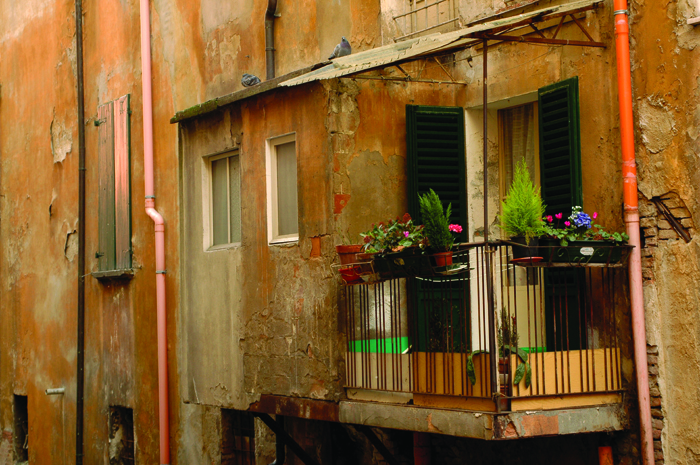
A MEDIEVAL CITYSCAPE
Any visit of Bologna should start from the lively Piazza Maggiore, where locals and tourists alike meet by the imposing Fontana del Nettuno, under the eye of the Roman god of the sea. The sombre Basilica di San Petronio is a must-see. The world’s sixth largest church has just undergone a facelift and is famous for some interesting oddities. First of all, its incomplete façade will tell you that it was never finished. Construction started at the end of the 14th century but the church had its official blessing only in 1954. Originally it was meant to be larger than St Peter’s, until Pope Pius IV stopped its construction and commissioned a new university on the basilica’s eastern side.
When you visit the inside, you’ll be surprised to find a massive sundial stretching for more than 67 metres down the eastern aisle. A rather bizarre intrusion of science into a religious setting, the 17th-century sundial is symbolic of the discovery of the anomalies of the Julian calendar that led to the establishment of the Gregorian leap year.
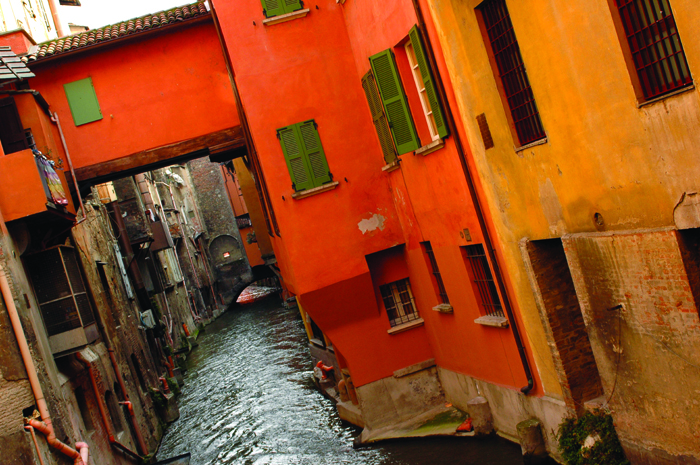
Along its southern edge is the Palazzo dei Banchi, named after the banks that once occupied the site. This was built in the 15th century to hide the narrow streets of the market behind. Its portico, also known as the Pavaglione, is the finest section of Bologna’s 40 kilometres of covered walkways – which is more than any other city in the world. Unsurprisingly, locals never bother to carry an umbrella in case of bad weather, because they know they can always shelter under the porticos.
Just a couple of minutes’ walk from the square is the city’s main attraction: an pair of leaning towers. These are reminders of that Middle Age craze that gave many Italian towns a high-rise skyline and pushed wealthy families into competitions over who could afford the tallest tower. The local winner was the Torre degli Asinelli, built by the Asinelli family in the 12th century. At 102 metres it is still Bologna’s tallest building. Though it leans 1.3 metres from base to tip, what will leave you dizzy – and breathless – are the 498 steps that lead up a semi-exposed wooden staircase. Superstitious students boycott it: according to a local lore, if you climb the tower you’ll never graduate.
There’s no need for visitors to worry on that score, though. On the contrary, the view over Bologna provides great rewards and will also help you to work off some of the tortellini you had for lunch! Its shorter sister, the Torre Garisenda, stands at 49 metres. A lack of solid foundations makes it tilt tipsily 3.2 metres to the south.
The area north of Piazza Maggiore is equally rewarding, with several other medieval towers to be found in the area around via Altabella, as well as the romantic Delle Moline canal, This waterway can be seen from via Malcontenti and via Piella and gives Bologna a romantic, almost Venice-like atmosphere.
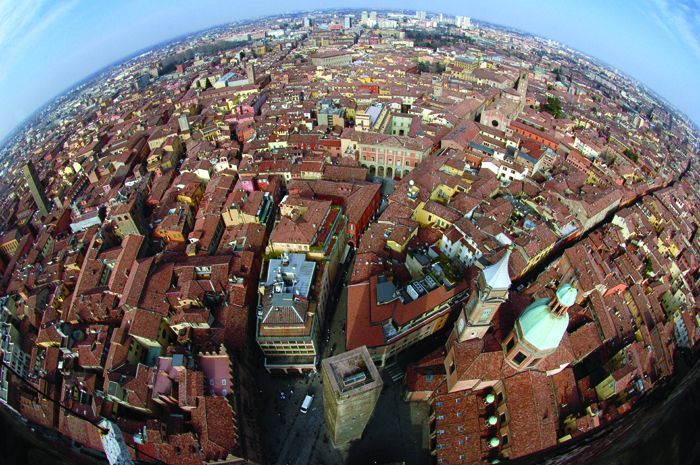
A FOODIE’S PARADISE
The food experience is absolutely unique and worth the trip in itself. Emilia Romagna is often considered the gastronomic belly of Italy, and Bologna, the region’s capital, is its navel. Speaking of which, the shape of tortellini, the city’s most famous product, takes its mythological inspiration from the navel of Venus. Aside from the associations with the goddess of love, eating a dish of tortellini in Bologna will certainly be a divine experience – to enhance their taste, make sure you eat them with a broth of capon, a rooster or cockerel that has been castrated to improve the taste of its flesh.
The keepers of this tradition of hand-made pasta are the so-called sfogline. Probably the city’s most emblematic figures, they patiently knead and roll the dough so that it acquires the perfect thickness, and, in the case of tortellini, stuff, twist and seal them so they keep their peculiar shape and do not break open.
One of their essential ingredients is mortadella, another local delicacy. Already known and appreciated by the Romans, it was even presented as a wedding gift to Lucrezia Borgia and Alfonso I, Duke of Este.
To experience the richness of Bologna’s culinary traditions, head to the Quadrilatero, the old medieval market and food shopping area, framed within Piazza Maggiore, via Rizzoli, via Castiglione and via Farini. Its alleys take their names from the medieval corporations that used to be based there – via Pescherie is where the fishmongers concentrated, via Orefici housed the Goldsmiths, via Caprarie was home to the butchers, and so on. The market has been there since Roman times.
Food is taken very seriously here. As well as being known as the ‘Red City’, another nickname for Bologna is ‘La Grassa’, the fat one, so you’d better count your calories!
